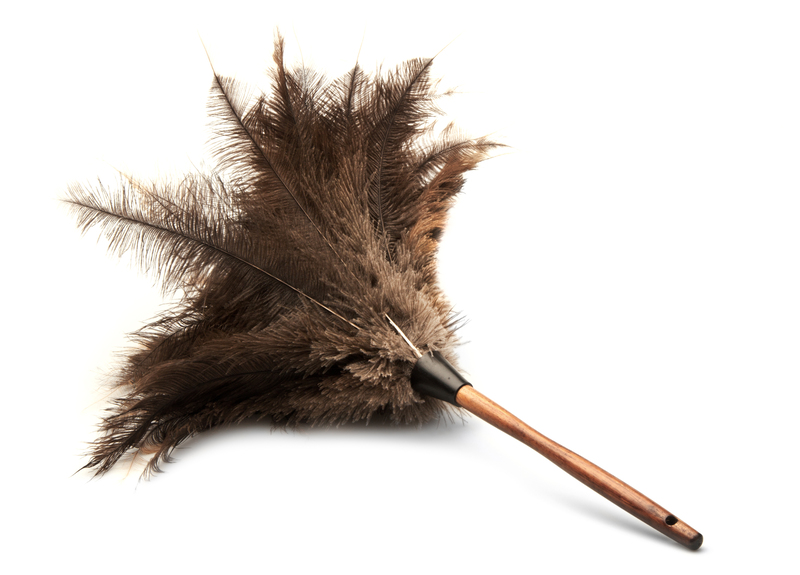Step-by-Step Techniques for Damp Odor Removal
Posted on 19/08/2025
Step-by-Step Techniques for Damp Odor Removal
Damp odors, often described as musty or moldy smells, can permeate homes, basements, bathrooms, and even cars, creating an unpleasant and unhealthy environment. When left untreated, these smells can signal more significant underlying moisture issues, potentially leading to mold growth, structural damage, and health concerns. In this comprehensive guide, we'll walk you through step-by-step techniques for damp odor removal using proven methods. Whether you're seeking to eliminate musty aromas from your home, clothes, or office, our practical solutions will help you enjoy a fresher, healthier environment.

Understanding The Causes of Damp Odors
Before attempting damp odor removal, it's essential to understand what causes these unpleasant smells. Musty odors are commonly the result of moisture problems that allow mold and mildew to thrive. The following factors contribute to damp odors:
- Poor ventilation in rooms and enclosed spaces
- Water leaks from pipes, roofs, or appliances
- Condensation on windows or cold walls
- Flooding or water intrusion
- High humidity levels indoors
By addressing the root cause, you'll not only get rid of damp smells but also prevent their recurrence.
Step 1: Identify the Source of the Damp Odor
Inspect High-Risk Areas
Start your musty odor removal process by thoroughly inspecting:
- Basements and crawl spaces
- Bathrooms and laundry rooms
- Kitchens, particularly under sinks
- Closets and wardrobes
- Attics and storage areas
Look for visual signs of moisture such as water stains, damp patches, peeling paint, and mold spots. Rely on your nose--trace the smell to pinpoint its origin for an effective musty smell removal strategy.
Step 2: Remove the Moisture Source
Successfully removing odors at their core requires addressing the underlying damp or leakage. Here's what to do:
- Fix leaks—repair pipes, roofs, and windows promptly
- Improve ventilation--open windows, use exhaust fans, or install vents
- Use dehumidifiers to maintain indoor humidity below 60%
- Dry out wet materials such as carpets and upholstery
- Seal cracks in basement walls or floors
The sooner you address the underlying moisture problem, the more successful your damp odor elimination will be.
Step 3: Clean and Disinfect Affected Areas
Hard Surfaces (walls, floors, tiles)
To ensure thorough damp smell removal from hard surfaces:
- Mix a cleaning solution: Combine one-part white vinegar with one-part water.
- Scrub the area with a sponge or brush, focusing on any visible mold or mildew.
- Rinse with clean water and allow to air dry completely.
- Optionally, repeat the process using a disinfectant to kill bacteria and fungi.
Soft Furnishings & Fabrics
Upholstery, carpets, curtains, and clothes are highly absorbent and can trap odors deeply. For musty odor elimination:
- Vacuum thoroughly using a HEPA filter vacuum.
- Wash and launder all removable fabrics with a cup of vinegar or a specialist odor remover.
- For carpets and rugs, sprinkle baking soda, allow it to sit for several hours, then vacuum it up.
- For persistent smells, consider professional cleaning or steam cleaning services.
Hidden and Hard-to-Reach Areas
Musty odors can linger in air ducts, behind walls, and under floorboards. Use long-reach tools or consult a professional for deep damp odor treatment if necessary.
Step 4: Deodorize and Neutralize Odors Naturally
After removing the cause and cleaning thoroughly, deodorizing will help achieve that fresh, clean scent. Try these natural damp odor treatments:
- Baking Soda--place bowls of baking soda in affected areas to absorb remaining odors
- Activated Charcoal bags also absorb moisture and smell
- White Vinegar: leave open containers in rooms or closets to neutralize stubborn smells
- Coffee Grounds: place in a shallow bowl to freshen up smaller areas
- Essential Oils: add a few drops of tea tree, lavender, or eucalyptus oil to diffusers or cleaning solutions for a pleasant scent and mild antimicrobial benefit
Remember to replace or refresh these deodorizing agents regularly for continued odor control.
Step 5: Improve Air Flow and Prevent Future Dampness
Consistent airflow and moisture control are key to preventing future damp odors. Implement the following habits:
- Open windows and doors regularly to let fresh air circulate
- Use exhaust fans in bathrooms and kitchens
- Invest in a quality dehumidifier for chronically damp spaces
- Store clothes, linens, and papers in dry, ventilated areas
- Check for signs of water ingress after storms or heavy rain
Additionally, consider using moisture-absorbing desiccants in problem areas and regularly check and maintain plumbing and roofing.
Key Tips to Keep Damp Odors Away Long-Term:
- Routinely inspect for new sources of moisture or leaks
- Clean regularly to prevent dust and mold buildup
- Replace filters in HVAC units and use air purifiers if possible
- Monitor humidity with a hygrometer
Step 6: Specialized Solutions for Persistent Damp Odors
Occasionally, stubborn damp odors persist even after following the above steps. Here's what to do if you're struggling with strong or reoccurring smells:
- Ozone Generators: Used by professionals to neutralize heavy smells, particularly in cars and closed rooms. (Note: Use with caution, follow safety guidelines).
- Enzyme Cleaners: These break down odor-causing compounds at the molecular level, suitable for pet accidents or deep set-in smells.
- Mold Remediation: If mold is extensive or hidden, hire a certified mold remediation company for safe removal.
- Professional Carpet and Upholstery Cleaning: For thick carpets or precious textiles, pros have equipment and solutions tailored for deep musty odor removal.
- Renovation: In extreme cases, replacing drywall, insulation, or flooring may be the only way to permanently eliminate odor sources.
Frequently Asked Questions on Damp Odor Removal
How can I prevent damp smells from returning?
Answer: Regular maintenance, constant humidity monitoring, fixing leaks quickly, and proper ventilation are the best defenses. Using dehumidifiers and silica gel packs in closed spaces can also help prevent recurrence.
Are commercial air fresheners effective for musty odors?
Answer: While air fresheners can temporarily mask smells, they do not address the underlying cause of damp odors. True elimination requires moisture and mold control strategies.
Can I use bleach for mold and mildew odors?
Answer: Bleach can kill surface mold and disinfect, but it's best suited for non-porous surfaces. Porous materials like wood, fabric, or drywall may require specialized mold and odor removers.
Is it safe to stay in a home with musty odors?
Answer: Persistent musty odors often indicate mold or bacteria, which can impact respiratory health and trigger allergies or asthma. Address odors promptly and consult professionals if you suspect mold contamination.
What if my rental property has damp smells?
Answer: Inform your landlord immediately. Visible damp, leaks, and mold should be remedied by property maintenance, as these can affect tenant health and safety.

Conclusion: Achieve a Fresh, Odor-Free Home
Removing damp odors involves more than just covering them up—it requires a strategic, step-by-step approach. By identifying sources, eliminating moisture, cleaning, deodorizing, and preventing recurrence, you reclaim your living space from stale, musty air. Always remember that the sooner you tackle the root of the problem, the easier and more effective damp odor eradication will be. For chronic or severe cases, consulting a certified specialist can ensure your home is healthy, welcoming, and truly odor-free.
Apply these step-by-step damp odor removal techniques to basements, kitchens, bathrooms, garages, closets, and even vehicles--anywhere moisture and smell can linger. Share this guide with friends and family who may be battling similar issues and enjoy a fresher, more vibrant home.
Related Resources & External Links
- Mold Resources from the US EPA
- Center for Disease Control - Mold Information
- Tips for Improving Indoor Air Quality
Keywords: step-by-step techniques for damp odor removal, musty odor elimination, damp smell removal, mold and mildew odor treatment, prevent damp odors, remove musty smell.


